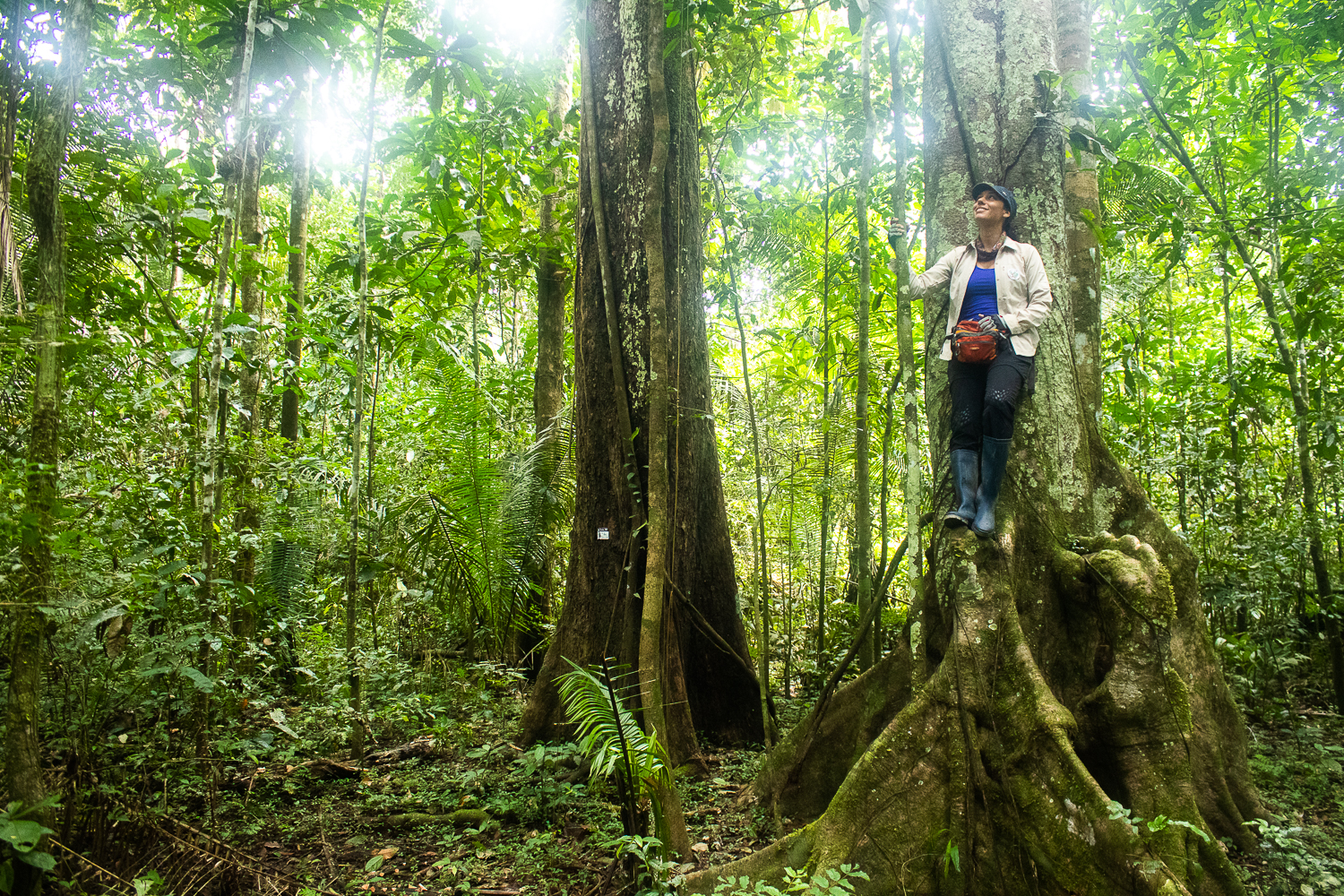“(…) a society hardly conscious of the sacred dimension of femininity is developing, which brings about disastrous consequences for the relationship between men and women, and between humans and Mother Nature.” Alonso del Río, 2011 (translated from Spanish)
I remember my summer vacations here in Lima, back when I was little girl, where playing and exploring was done in the streets, and where there were climbable trees in the parks and the town was safe for everyone. Nowadays the trees have no branches for us to grab onto and climb up, because they all get cut down. The green areas are ever rarer, the streets ever more dangerous, the violence against women ever more severe, and the kids ever more incapable of playing outside without constant supervision.
Reducing the green urban areas, maiming the trees, destroying the Amazonic rainforest, and the violence against women all seem like separate, individual problems – when in reality have far more in common than what we normally realize.
In Perú, every two days a woman dies from feminicide, and every single day more than two of us disappear. Meanwhile, the rainforest loses 400 hectares of land and approximately 74 great Shihuahuaco trees (over half of these being over 500 years old) every single day. We simply cannot continue with this destructive spree.

The intrinsic relation between women and nature is undeniable. One example of this connection manifesting itself can be found in women’s and nature’s cycles both. We have the monthly blood cycles and gestation cycles, while Mother Nature has the moon cycles, the sun cycles, and the seasons. Nature is cyclic. Women, then, are cyclic as well. Women and Nature carry within them the genesis and the regeneration, and are both an evident expression of the cycle of life. Unsurprisingly, the best term to symbolize this connection is Pacha Mama, who happens to have a predominantly feminine energy.
We are living a crisis closely tied with unchecked growth (both economic and demographic) which falls out of the realm of the natural. In living systems the normalcy lies in slow and limited growth to then proceed into the stage of maturity. What is happening to us now, however, is a society plagued with industries claiming ever more, and where consumerism leaves us with ever less. It’s a system of illness entirely against global health. In this system, the balance between femininity and masculinity has long been lost in favor of glorifying a toxic and self-destructive prescription of masculinity based on actions and physical strength. Both masculinity and femininity are important for our survival, and yet we seem to have been unable to strike a balance between the two – this being evident in the erasure of women’s contribution throughout history.
It is therefore necessary for us to reassess the relationship between masculinity and femininity to live as balanced and whole human beings, for it’s in the equilibrium of duality (negative – positive) where we can find light, energy, matter; life itself.
This unbalance can also be seen in men’s bigger ecologic print in relation to women’s. The type of masculine behavior enforced by society leads to greater gas emissions which alter the climate. This was discovered by two independent scientific studies that compared the behavior, consumption, and daily activities of both men and women in the most industrially developed countries. Another finding was that, on average, women cause 7kg less in daily carbon dioxide emissions than men. As stated by Frédéric Chomé, the author of one of these studies; “I believe the results are a clear indicator of the differences in environmental pollution which arise from the different behavior patterns between men and women.”

It shouldn’t come as a surprise, then, that investigations on the differences between men and women agree that women (who are not as shunned for expressing femininity as men are) display values and attitudes far more environmentally positive than men, aside from partaking in more activities directly tied with nature.
(Women Engaging the Natural World: Motivation for Sensory Pleasure May Account for Gender Differences. Colorado State University and Pennsylvania State University-Abington, published in Ecopsychology).
As a country, we have a big chance to walk together toward social and environmental justice for everyone. We are the second country with the most area covered by the Amazonic rainforest, with all its riches and potential. Getting women involved in communities’ decisions towards the rainforest has turned out to have wonderfully positive effects in several aspects of forestry management, including the regulation of illegal activities and the communities’ capacity to tackle conflicts as a group. According to a study by CIFOR (2013), the inclusion of women in executive committees of forestry management, as well as their effective participation in the decision making, improves the governance and sustainability of the rainforest’s resources. A better equity of gender, then, is the key for sustainable forest management in many countries.
Women’s Day is a day of pursuit of equality in opportunities and rights. It’s a day where we fight for there to be no more violence.
Today, Women’s Day, I would like to pay homage to the essence of what we consider femininity to be: to care, to share, and to empathize – be it at home, or in your community. We have to recognize women, femininity, and the planet as our sacred mother. Not only because it deserves respect, but because if we don’t, our society simply will not survive to see the next decade. Treasuring that which is feminine is crucial for humanity’s survival on this planet.